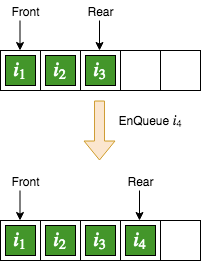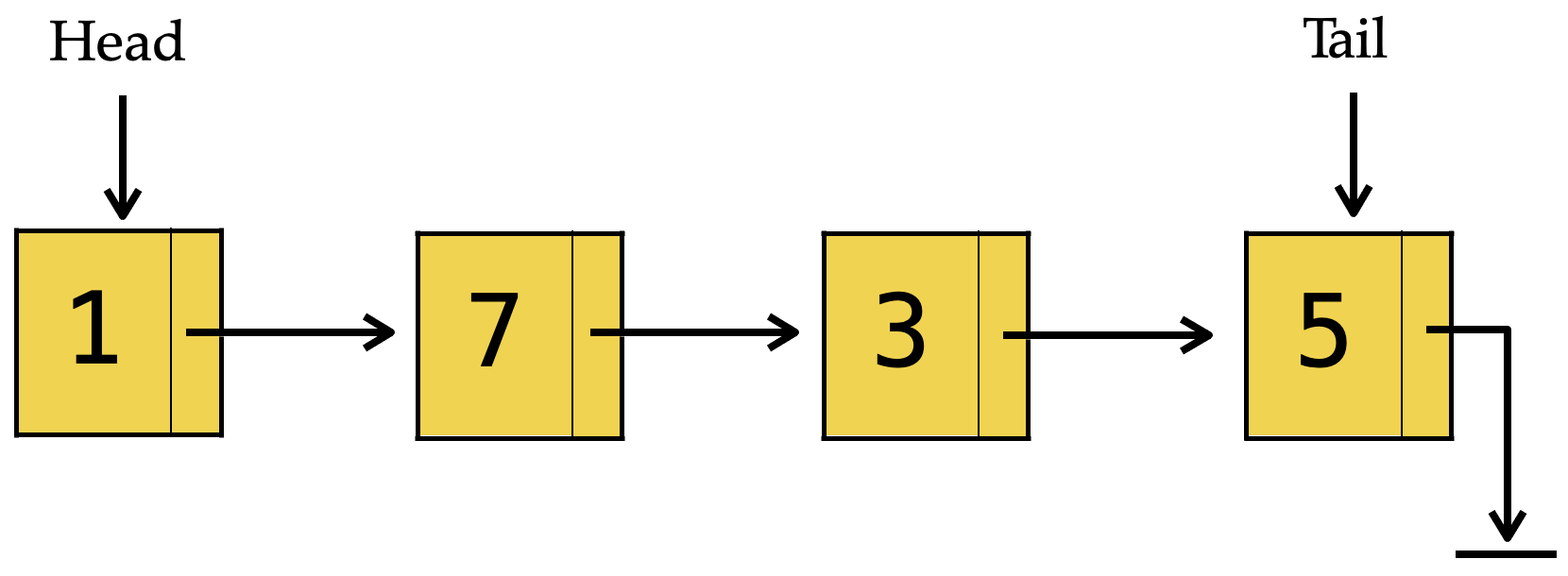Queues#
A queue is another linear data structure in computer science that follows the First-In-First-Out (FIFO) principle. This means that the element that is added first to the queue is the first element to be removed from it.
A queue is similar to a queue of people waiting in line, where the person who enters the queue first is the first person to leave. The queue data structure has two primary operations: enqueue and dequeue. The enqueue operation adds an element to the end of the queue, while the dequeue operation removes the front-most element from the queue.
Queues are commonly used in programming for various purposes, such as job scheduling, breadth-first search, and buffer management. In job scheduling, a queue is used to schedule tasks or processes for execution based on their priority or arrival time. In breadth-first search, a queue is used to traverse a graph or tree in a level-by-level manner. In buffer management, a queue is used to manage the flow of data between two processes or devices.
Basic Operations#


enqueue
inserts one element onto the queue

The
enqueueoperation inserts a new item at the rear end of thequeue. After theenqueueoperation, the value of rear is increased by 1.
dequeue
returns the element at the top of the queue (and removes it)

The dequeue operation removes the item at the front of the queue. When we remove the item at the front, we increase the value of front.
isEmpty
not necessary, but sometimes useful
Documentation#
#include <stack>
#include <iostream>
int main() {
std::queue<int> q1;
q1.push(5);
std::cout << q1.size() << "\n";
std::queue<int> q2(q1);
std::cout << s.size() << "\n";
std::deque<int> deq { 3, 1, 4, 1, 5 };
std::queue<int> q3(deq);
std::cout << q3.size() << "\n";
return 0;
}
1
1
5
Implementation : Array#
enqueue and dequeue at different ends of the array (easier and efficient)
can be fixed-length
can also use a dynamic array (grows over time)
additional cost for dynamic arrays

void enqueue(Queue* queue, int item)
{
if (isFull(queue))
return;
queue->rear = (queue->rear + 1)
% queue->capacity;
queue->array[queue->rear] = item;
queue->size = queue->size + 1;
cout << item << " enqueued to queue\n";
}
int dequeue(Queue* queue)
{
if (isEmpty(queue))
return INT_MIN;
int item = queue->array[queue->front];
queue->front = (queue->front + 1)
% queue->capacity;
queue->size = queue->size - 1;
return item;
}

https://www.geeksforgeeks.org/queue-set-1introduction-and-array-implementation/
https://www.cs.usfca.edu/~galles/visualization/QueueArray.html
May take a moment to load…
Implementation : Linked List#
enqueue and dequeue at different ends

https://www.cs.usfca.edu/~galles/visualization/QueueArray.html
void enQueue(int x)
{
QNode* temp = new QNode(x);
if (rear == NULL) {
front = rear = temp;
return;
}
rear->next = temp;
rear = temp;
}
void deQueue()
{
if (front == NULL)
return;
QNode* temp = front;
front = front->next;
if (front == NULL)
rear = NULL;
delete (temp);
}
https://www.geeksforgeeks.org/queue-linked-list-implementation/
May take a moment to load…
Considerations#

Underflow
error can be thrown when calling dequeue on an empty queue
Overflow
error can be thrown when calling enqueue on a full queue (especially in fixed-length implementations)
Applications#
Media Playlists (Youtube, Spotify, Music,etc.)
Process management in Operating Systems
Simulations
Used in other algorithms
etc…
Time & Space Complexity#
Operation |
Best |
Average |
Worst |
Space |
|---|---|---|---|---|
\(isEmpty()\) |
\(O(1)\) |
\(O(1)\) |
\(O(1)\) |
\(O(1)\) |
\(enqueue()\) |
\(O(1)\) |
\(\color{red}{O(n)}\) |
\(\color{red}{O(n)}\) |
\(O(1)\) |
\(dequeue()\) |
\(O(1)\) |
\(\color{red}{O(n)}\) |
\(\color{red}{O(n)}\) |
\(O(1)\) |
\(count()\) |
\(O(1)\) |
\(\color{red}{O(n)}\) |
\(\color{red}{O(n)}\) |
\(O(1)\) |
\(peek()\) |
\(O(1)\) |
\(O(1)\) |
\(O(1)\) |
\(O(1)\) |
\(show()\) |
\(O(1)\) |
\(\color{red}{O(n)}\) |
\(\color{red}{O(n)}\) |
\(O(1)\) |
Note: there is no advantage in using an array versus a linked list for this structure…
